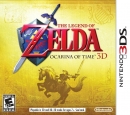I completely agree with Miyamoto on the differences between video games and movies, two mediums that are miles apart in narrative structure, in spite of the video game industry's desire to merge the two.
Here's what I wrote about this subject early last year: http://gamrconnect.vgchartz.com/post.php?id=5094029
Simply put, despite any aesthetic similarities, video games, by definition, can never obtain the same level of, for lack of a better word, immutability, of movies, or novels and symphonies, for that matter. Games are determined by others' interaction with them; the game designer and the game player combine to create an interesting set of expectations and experiences. With movies, there is no player, there are only viewers. The movie designer's product is, again, immutable. It is art in its purest form.
Video games, conversely, are interactive art. Their greatness comes from the way in which others interact with and, subsequently, change them. They are built around rules, mechanics, challenges, and goals. Those games that abandon those rules, goals, and measurements for victory cease to become games; they become mere representations of a movie, or a story, or a play, existing in a no man's land, neither game nor movie.
So, again, I agree with Miyamoto. When video games stray too far into the realm of cinema, they suffer.










































































